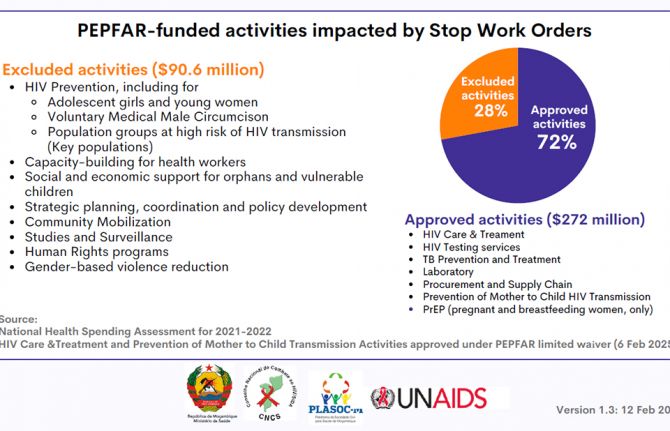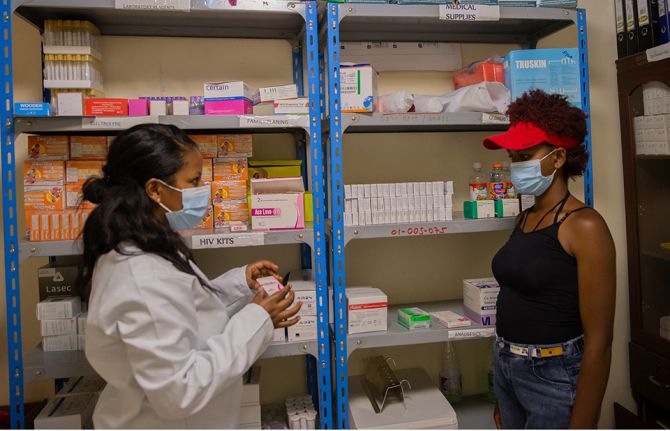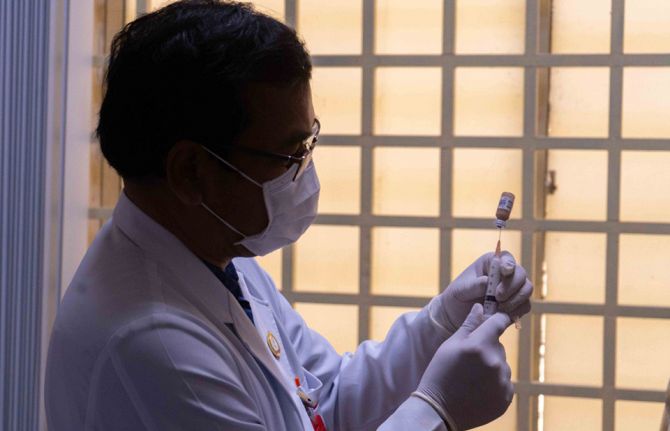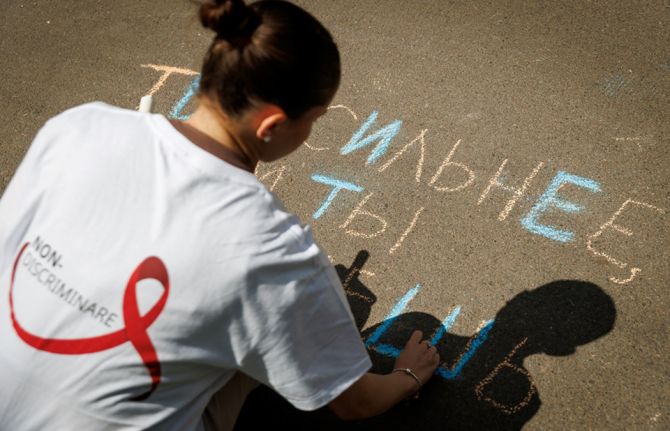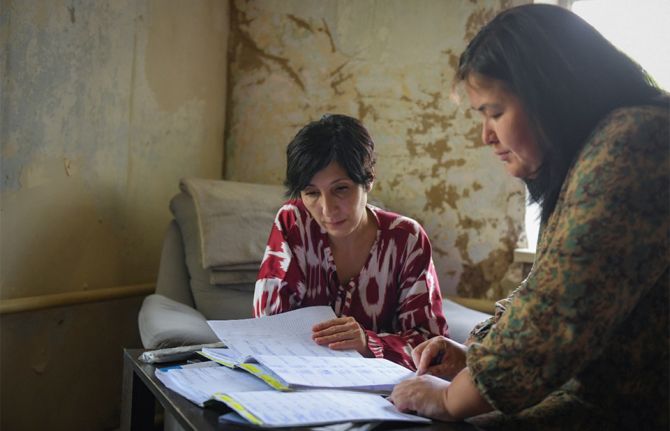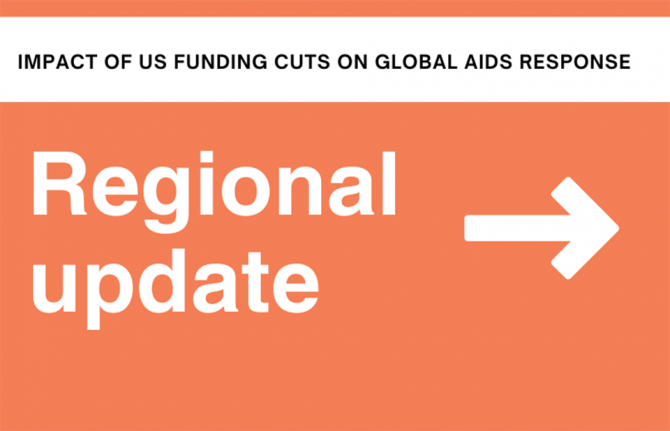
Feature Story
HIV, Health and Human Rights: The Legacy of Jonathan Mann Today
24 November 2008
24 November 2008 24 November 2008 Jonathan Mann was a visionary physician, advocate and scientist who highlighted the critical links between human rights and public health.
Jonathan Mann was a visionary physician, advocate and scientist who highlighted the critical links between human rights and public health.Today a public event in celebration of Jonathan Mann and his legacy on HIV, health, and human rights is being held at UNAIDS Secretariat, Geneva. The event, co-hosted by UNAIDS, the World Health Organization and the Office of the UN High Commissioner for Human Rights, also marks the 60th Anniversary of the Universal Declaration of Human Rights.
Jonathan Mann was a visionary physician, advocate and scientist who highlighted the critical links between human rights and public health. The enduring relevance of Jonathan’s work is clear—the protection and promotion of human rights is needed now more than ever in the response to AIDS. Stigma and discrimination remain major barriers to achieving universal access to HIV prevention, treatment, care and support. Gender-based violence puts women and girls at risk of HIV infection. Punitive laws keep sex workers, men who have sex with men, people who use drugs and other key populations from accessing the HIV-related programmes and services they need. Panellists will address Jonathan’s legacy, as well as the challenges today and in the years to come in HIV, health and human rights.
HIV, Health and Human Rights: The Legacy of Jonat
Press centre:
UNAIDS acknowledges the health and human rights legacy of Jonathan Mann on the tenth anniversary of his death (2 September 2008)
Multimedia:
Watch the event live online from 17:00 to 20:00 (CET)
Publications:
Invitation to A celebration in honour of Jonathan Mann and the 60th Anniversary of the Universal Declaration of Human Right (pdf, 299 Kb)
Related

Feature Story
Philanthropies major contributors to AIDS
21 November 2008
21 November 2008 21 November 2008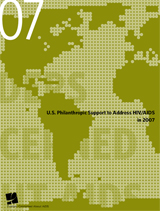
U.S. Philanthropic Support to Address HIV/AIDS in 2007
Total AIDS-related philanthropy in 2007 has risen to US $555 million among U.S.-based philanthropies and to EUR114 million (US $168 million) among Europe-based philanthropies, according to new reports from Funders Concerned About AIDS (FCAA) and the European HIV/AIDS Funders Group (EFG), released in New York yesterday.
The set of reports - the first of its kind - comes at a time when the global financial crisis could potentially impact the global AIDS response.
“There has been a good return on investments made on AIDS” said Dr Paul de Lay, UNAIDS Director for Evidence, Monitoring and Policy. “In the past three years, not only have we seen the number of people on treatment doubling, but also tangible results in HIV prevention efforts, with the number of new HIV infections falling in several countries”.
Sunita Viswanath, FCAA’s Executive Director, emphasized the essential role of the philanthropic sector as governments and global institutions face increasing financial pressures while numbers of people living with HIV - and the risk of infection - continue to rise.
Dr de Lay added, “Philanthropies can play an important role, in supporting a long term and sustainable response to AIDS and help donors and others not lose sight of their goals amidst short term crises – any cutback in investments in the AIDS response today will undoubtedly affect millions of lives”.
The findings from a study in which organizations identified the top population groups that receive the greatest benefit from their domestic and international funding for 2007, identified people living with HIV most frequently as chief beneficiaries of both domestic and international philanthropy by both U.S.-and Europe-based funders.
EFG Chair, Astrid Bonfield, commented on the magnitude of the AIDS epidemic and the challenges and opportunities of funding, remarking that U.S. and European philanthropy could recognize and exercise its ability to be flexible, collaborate, and grow towards the most effective response to HIV.
Over the past three years FCAA worked with EFG and UNAIDS to harmonize their data collection in order to present the most accurate picture of global AIDS-related philanthropy. FCAA, EFG, and UNAIDS are now embarking on an effort to provide information and support to funders internationally through the creation of the Working Group on Global Philanthropic Resource Tracking.
Philanthropies major contributors to AIDS
Press centre:
Press release from FCAA and EFG: New Report Documents Increased Philanthropic Efforts in the U.S. and Europe to Address the Global AIDS Epidemic (21 November 2008)
Feature stories:
UNAIDS and Kaiser Family Foundation release new report assessing funding for AIDS by G8 countries and other major donors (06 July 2008)
External links:
Funders Concerned About AIDS
European HIV/AIDS Funders Group
Publications:
U.S. Philanthropic Support to Address HIV/AIDS in 2007 (pdf, 1.41 Mb)
European Philanthropic Support to Address HIV/AIDS in 2007 (pdf, 1 Mb)

Feature Story
Kenya’s experience informs new resource for increasing coordination on AIDS
21 November 2008
21 November 2008 21 November 2008
The Joint Annual Programme Review process is a vital tool in the global effort by governments and development organizations to ‘make the money work’ Credit: UNAIDS/P.Virot
HIV prevalence in Kenya has halved in a decade – a dramatic and sustained decline rarely seen elsewhere in Africa. The Government aims to continue this level of progress by ensuring that the national response to the epidemic is as coordinated and collaborative as possible, and that funding is spent effectively.
In recent years, as national responses to and funding for AIDS in many countries have become more complex – with more activities, stakeholders and donors than a few years ago – coordination has become an even bigger challenge.
Kenya decided to support coordination by conducting Joint Annual Programme Reviews, which bring together a wide range of people working on AIDS to take a comprehensive look at the overall national response. The Joint Review process is led by the national Government and involves participation at all government levels, as well as by civil society organizations, networks of people living with HIV, local and district authorities, and international donors and organizations.
“Joint Reviews of National AIDS Responses: A Guidance Paper”.
With the lessons learned from the Joint Review processes in Kenya and other countries, UNAIDS has developed a new publication entitled “Joint Reviews of National AIDS Responses: A Guidance Paper”. It aims to help countries conduct Joint Reviews and improve coordination, implementation and funding effectiveness among the many stakeholders involved in national responses.
Well carried out Joint Reviews provide a truly nationally-led forum for sharing information, achievements, shortfalls, challenges and emerging issues, and assessing how well efforts and spending are aligned in meeting the goals of the national AIDS strategy.
Kenya has undertaken in 2007 the 6th consecutive Joint Review of its national response and the process has become a valued method for building bridges and coalitions among the many groups involved in the AIDS response.
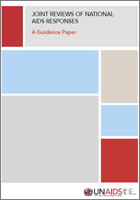 With the lessons learned from the Joint Review processes in Kenya and other countries, UNAIDS has developed a new publication entitled “Joint Reviews of National AIDS Responses: A Guidance Paper”.
With the lessons learned from the Joint Review processes in Kenya and other countries, UNAIDS has developed a new publication entitled “Joint Reviews of National AIDS Responses: A Guidance Paper”.Kenya’s 2007 Joint Review lasted two and a half months and involved hundreds of participants – not a quick or easy process, but well worth the effort. The Review is widely recognized by those working on AIDS as a platform for bringing together data from a range of sectors and levels, including surveillance and service delivery data, as well as qualitative data collected at the community level. The 2007 Review was more inclusive than ever, with participants from all 71 districts and nine regions of the country. The findings and recommendations were used to revise the way the country measures the results of AIDS programmes, and also to inform planning at district and regional levels. The effort of doing regular participatory joint reviews has resulted in more alignment, collaboration and commitment among the many organizations involved in the Kenyan AIDS response.
Anatomy of a Joint Review
The new Guidance Paper gives specific advice for conducting a successful Joint Review. However, just as every country’s AIDS epidemic and response is different, the Joint Review process in each country will differ according to the national political environment, health and social policies, infrastructure, economic development and other factors. Nonetheless, the Guidance Paper lays out several principles which should help build a strong Joint Review process in any country, including:
- national ownership
- inclusion and participation
- commitment to results – participants must agree from the outset to subscribe to the recommendations of the Review
- impartiality
- evidence informed
- enhancing national planning
- sensitivity to gender and human rights.
The Joint Annual Programme Review process is a vital tool in the global effort by governments and development organizations to ‘make the money work’ – ensuring that all AIDS funds are linked to national objectives and simplifying aid structures. In Kenya, for example, the Joint Review process has helped to strengthen donors’ confidence in the quality and effectiveness of national programmes.
The new Guidance Paper on Joint Reviews, along with other related tools, is designed to help countries unite the many stakeholders involved in the AIDS response, in order to increase understanding of the epidemic and work collectively to achieve results.
Kenya’s experience informs new resource for incre
Feature story:
Assessing aid effectiveness at Accra forum (01 September 2008)
Publications:
Joint Reviews of National AIDS Responses: A Guidance Paper (pdf, 316 Kb)
Related
 “Who will protect our young people?”
“Who will protect our young people?”

02 June 2025
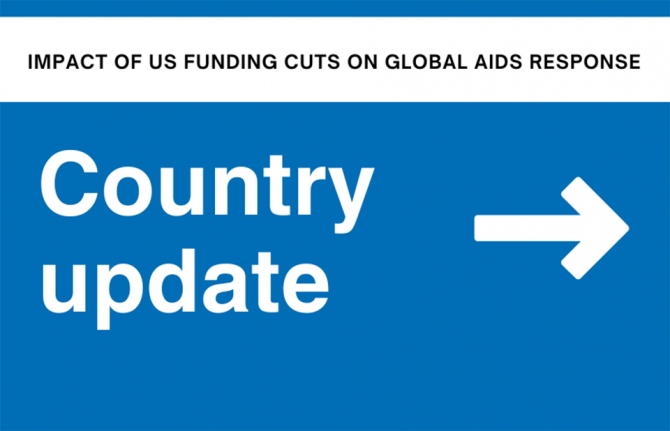 Impact of US funding cuts on HIV programmes in Kenya
Impact of US funding cuts on HIV programmes in Kenya

04 April 2025
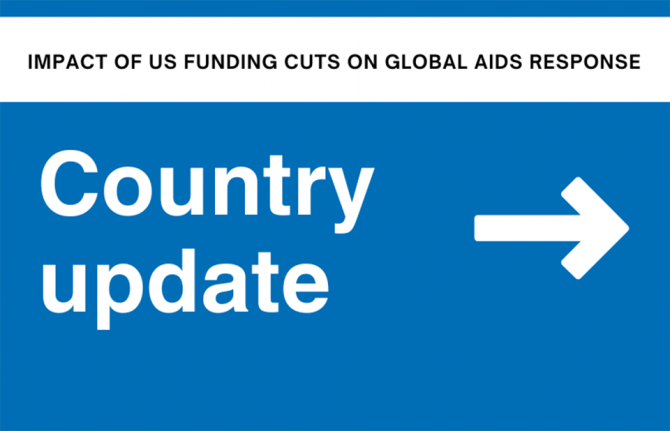 Impact of US funding cuts on HIV programmes in Kenya
Impact of US funding cuts on HIV programmes in Kenya

01 April 2025

Feature Story
New guidelines for media reporting on HIV in India
19 November 2008
19 November 2008 19 November 2008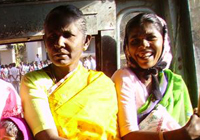
Women in Mumbai, India. Credit: UNAIDS/S. Montanari
Journalists have a responsibility to report on HIV issues with accuracy and sensitivity to avoid stigmatizing people living with HIV and to clarify common misunderstandings about the disease, its prevention and transmission.
Following a court case in India where unbalanced reporting led to discrimination against an HIV positive child, the Press Council of India updated its media guidelines on the coverage of HIV-related news. Surveys show that media training and sensitization leads to relatively more balanced and accurate media reportage on HIV particularly in high-prevalence states.
The guidelines were published on 16 November, India’s National Press Day, at a function presided over President of India Pratibha Patil.
“The Press Council of India guidelines are a major step forward in the HIV response and they will set a benchmark for media reporting on the issue,” said Mohuya Chowdhary, Senior Editor, NDTV.
“At a time when the Indian media is expanding at a furious pace, these guidelines are very necessary to ensure qualitative and responsible coverage of HIV-related issues,” he continued.
How the media cover HIV issues or stories related to AIDS
Knowledge and understanding about the virus, as well as developments in HIV treatment, have undergone a sea change since 1993 when the Press Council guidelines for journalists which were first drawn up. The nature of media has also changed with the rise of electronic media in addition to print.
To assist in the review and update of guidelines to media the Press Council of India approached UNAIDS and civil society working in HIV. Workshops were held in September and October 2008 where experts discussed, debated and formulated revisions to the guidelines. They also agreed that this resource should be translated into as many languages as possible for the benefit of the journalists across India. Speaking at the launch, Justice GN Ray, Chairman of the Press Council of India, thanked UNAIDS for facilitating the process of formulating the new guidelines.
As HIV impacts across society they recommend that instead of concentrating on health reporters alone, people at all levels of a news organization should be trained and sensitized on HIV, especially on appropriate terminology.
|
Overview of messages covered in “Guidelines on HIV and Media” - The Press Council of India (October 2008)
|
Be objective, factual and sensitive
The guidelines emphasize that journalists must ensure their story is objective, factual and sensitive, even more so when they are reporting on HIV. This includes highlighting positive stories where appropriate, without underplaying the fact that HIV is a serious issue. Telling the whole story means giving it a human face, and allowing the voices of people living with HIV to be heard.
Accuracy of reporting is critical since important personal and policy decisions may be influenced by media reports and so distortion of facts in any manner is unacceptable. In the context of HIV this means that journalists need to be very careful about the scientific and medical details as well as statistics.
Adopt existing terminology
The guidelines also recommend that journalists and news organizations adopt and widely disseminate existing standardized terminology on reporting on HIV, such as UNAIDS Terminology Guidelines to encourage responsible coverage of the issue.
New guidelines for media reporting on HIV in Indi
Feature stories:
Police in India commit to support community AIDS responses (11 November 2008)
Publications:
Press Council of India - Guidelines on HIV and Media
UNAIDS’ Terminology Guidelines (pdf, 326 Kb)

Feature Story
HIV response in Moldova
17 November 2008
17 November 2008 17 November 2008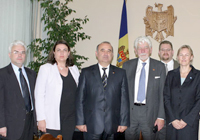
Professor Lars Kallings, the UN Secretary-General’s Special Envoy for HIV in Eastern Europe, last month visited the Republic of Moldova.
Professor Lars Kallings, the UN Secretary-General’s Special Envoy for HIV in Eastern Europe, last month visited the Republic of Moldova. During his visit, which coincided with United Nations Day, he emphasized the importance of agencies joining their efforts for a more effective HIV response with enhanced visibility and impact. In a series of meetings Professor Kallings met with the Deputy Prime Minister as well as the Minister of Health, Social Protection, Family and Child and Minister of Education and Youth.
Professor Kallings welcomed the Government of Moldova’s commitments and efforts in the AIDS response and reaffirmed the UN commitment to provide technical support to strengthen the capacity of the Government, trade unions, business and civil society organizations in the national response to AIDS.
During his advocacy mission, he took the opportunity to discuss the following priorities with government officials:
1. Review of legislative framework, with a focus on amending the law on HIV prevention and control of HIV which was adopted in 2007. While largely consistent with human rights standards, it contains certain discriminatory provisions which may limit freedom of movement.
2. Greater sustainability of the efforts in the context of the national AIDS response through increasing contributions from the state budget and institutionalizing mechanisms for improved management of financial resources and better resource needs estimations
3. Scaling-up efforts on HIV prevention based on a strategic framework for clearer focus on results, better accountability and enhanced coordination, with a definite focus on youth, targeted through health education institutionalized in the school curricula
4. Improved inter-sectoral coordination in the national response to HIV, and better involvement of key Ministries like the Ministry of Education and Youth and Ministry of Finance He also held discussions with representatives from the private sector, civil society and international organizations
HIV in Moldova
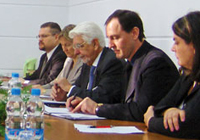
The Republic of Moldova is classified as a low prevalence country with HIV more likely impacting key populations including people who inject drugs
The Republic of Moldova is classified as a low prevalence country with HIV more likely impacting key populations including people who inject drugs. However there are signs of HIV spreading into the general population as unprotected sex is an increasing mode of transmission in Moldova. According to the World Bank, Moldova, as a proportion of the population, is one of the largest emigration countries in the world. Large-scale emigration by people in search of work, particularly to neighbouring countries like Russia and Ukraine mean there are many migrant workers who may be more vulnerable to HIV infection. Analysts think this may become a determinant in the future evolution of HIV in the Republic of Moldova.
The proportion of women among newly reported HIV cases with sexual route of transmission is also growing (62% in 2007, compared to 57% in 2006).
HIV prevention
Given these trends the UN Envoy emphasized the importance of HIV prevention among the general population for a successful response to AIDS.
“Efforts should be strengthened to reach every woman, every man, and every young person with general prevention information and behavior changing techniques, including HIV prevention programmes in schools and other education institutions and in the workplace,” stressed Professor Lars Kallings.
“Moldova is on the right track towards achieving the goals of the 2001 Declaration of Commitment on HIV/AIDS and the 2006 Political Declaration, and is in the fortunate position of still having a unique window of opportunity that if the HIV is recognized as the highest priority the effectiveness of the national response would be to the utmost and Moldova may become one of the countries in the region which would halt and revert the epidemic by 2015,” noted Dr Sergei Furgal, Director, a.i., UNAIDS Regional Support Team for Eastern Europe and Central Asia.
HIV response in Moldova
Feature stories:
Interview with UN Special Envoy Lars Kallings (20 October 2008)
Journal of Internal Medicine: Review article by L. O. Kallings (21 February 2008)
Professor Lars Kallings’ advocacy visit to Belarus (25 October 2006)
UN Special Envoy for AIDS in Africa Elizabeth Mataka (15 September 2008)
Related

Feature Story
ICC and UNAIDS celebrate partnership and look to future
17 November 2008
17 November 2008 17 November 2008
UNAIDS Deputy Executive Director Michel Sidibé (right) welcomed International Cricket Council President David Morgan to UNAIDS to discuss their continued partnership on AIDS. Geneva, 17 November 2008. Credit: UNAIDS/D. Bregnard
The President of the International Cricket Council (ICC), David Morgan, today visited the UNAIDS Secretariat in Geneva where he was welcomed by UNAIDS Deputy Executive Director Michel Sidibé.
In a meeting with UNAIDS and UNICEF staff the ICC President reaffirmed the Cricket Council’s commitment to the partnership which began in September 2003 when UNAIDS and ICC first teamed up to bring messages of HIV prevention to young people across cricket playing nations. In 2006 UNICEF also joined the partnership which now also supports the “Unite for Children, Unite against AIDS” campaign.
Michel Sidibé reviewed the global successes in the short history of this partnership where through high-profile international events as well as local initiatives, players as well as coaches have spread messages to dispel stigma and misplaced fear and misunderstanding about HIV. He also spoke about the importance of HIV prevention and support services reaching young people.
“We must focus on supporting and working alongside a new generation of young leaders in the AIDS response, including those living with HIV. The work of this partnership can be instrumental in this,” noted Mr Sidibé.
“I would especially like to congratulate the ICC leadership on its commitment to this work and personally thank you for your visit to UNAIDS today.”

(from left): International Cricket Council President David Morgan, UNAIDS Intern Shashank Mane, UNAIDS Youth Intern Korey Chisholm and UNAIDS Deputy Executive Director Michel Sidibé. Geneva, 17 November 2008. Credit: UNAIDS/D. Bregnard
A series of Public Service Announcements on HIV have been recorded by leading stars such as Graeme Smith, Kumar Sangakkara and Mahendra Singh Dhoni for use in stadia at ICC Events and by broadcasters. Activities have taken place at international events including the ICC Cricket World Cup and the ICC World Twenty20 2007. This has included leading players visiting local community projects and wearing red ribbons to show their support for people living with HIV.
A “Cricket HIV and AIDS curriculum” has been developed by the ICC and UNAIDS for players and coaches to help inform young people about HIV and how they can use their influence to make a positive change in their communities. Under the programme “The Captain’s Pledge,” Captains of all Test Cricket playing nations took part in a series of initiatives to help young people understand how HIV is transmitted.
Spirit of Cricket
An interactive discussion on strategic planning for the coming years was led by UNICEF Partnerships Manager, Andres Guerrero.
At the meeting, UNAIDS Youth Intern Korey Chisholm spoke of how sport can be a force for change through breaking down age barriers and building self-esteem. He thanked the ICC for replacing stigma with support. UNAIDS Intern Shashank Mane, from India, also shared his thoughts on the partnership:
“Looking at the influence of cricket in my life, I feel that UNAIDS and the ICC have a lot to offer each other, as well as the world, when it comes to connecting young people through sports with AIDS awareness.”
“The influence of cricket is growing around the world; unfortunately, AIDS continues to be transmitted as well. I could not think of a better way to spread HIV prevention messages and to eradicate HIV-related stigma and discrimination than through a partnership such as this one.”
ICC and UNAIDS celebrate partnership and look to
Cosponsors:
Press centre:
ICC Cricket World Cup West Indies 2007 to Shine Spotlight on Children and Young People Affected by HIV (06 Mar 2007) (pdf, 113 Kb)
India and Pakistan fight AIDS through cricket (08 Apr 2004) (pdf, 107 Kb)
International cricket teams to support World AIDS Day (28 Nov 2003) (pdf, 119 Kb)
Feature stories:
Aussie stars support Love Life project (12 September 2007)
“Cricket can help combat HIV and AIDS”, says Graeme Smith (12 September 2007)
Pakistan cricket team talks about HIV prevention (12 September 2007)
AIDS focus at ICC South Africa cricket championship (10 September 2007)
AIDS events continue at World Cricket Cup (03 April 2007)
Cricket World Cup raises AIDS awareness (11 March 2007)
Multimedia:
View photo gallery of the visit of ICC President to UNAIDS
View the PSAs: Cricketers and their teams speak about HIV/AIDS
External links:
International Cricket Council
Unite for children. Unite against AIDS
Speeches:
Address by Shashank Mane, UNAIDS Intern, during the visit of ICC president to UNAIDS (17 November 2008) (pdf, 31.5 Kb)
Publications:
The ‘Cricket HIV and AIDS Curriculum’ publication (pdf, 1.16 Mb)
Related
 “Who will protect our young people?”
“Who will protect our young people?”

02 June 2025

Feature Story
“Artists Against AIDS” help fight stigma and discrimination in Russia
17 November 2008
17 November 2008 17 November 2008
UNAIDS in the Russian Federation launched the initiative “Artists Against AIDS” which aims to decrease stigma and discrimination against people living with HIV.
On 11 November UNAIDS in the Russian Federation launched the initiative “Artists Against AIDS”. The initiative, aims to decrease stigma and discrimination against people living with HIV while raising funds for an orphanage that cares for HIV positive children.
Twenty-three artists, including several well known Russian painters as well as artists from Greece, the Ukraine, the Unites States of America and Spain contributed their works for the exhibition and sale which is being held at the Central House of Artists from 11 – 20 November 2008. More than 200 guests attended the exhibition’s opening ceremony, including representatives from the private sector, the artistic and diplomatic communities, as well as governmental and non-governmental organizations.
Lisa Carty, UNAIDS Country Coordinator opened the exhibition noting that, “In a country like Russia, that has such a deep respect for the arts, it sends a powerful signal when prominent artists speak out against stigma and discrimination. We know that this can make a real difference in mobilizing broader public awareness and support.”
Participating artists welcomed the event as an opportunity to speak about AIDS to help people overcome their prejudices and misconceptions about the disease, as well as to directly help children impacted by HIV.
Sergey Tsigal, one of the twenty three artists who donated their work for the exhibition said, “While I am not a rich man I consider this type of charity project an essential part of my life. Artists can play an important role in the response to AIDS through their art work.”

Artist Sergey Tsigal and Dr. Antonina Petrova, Chief Doctor of the Lomonosov Orphanage at the opening ceremony of the exhibition, 11 November 2008.
The artists have donated 35 paintings and graphic works for the exhibition and sale and all proceeds will be provided to the Lomonosov Children’s Home in Leningrad region.
In Russia about 440,000 cases of HIV infection are officially registered; however, many Russian and international experts believe that the actual number of people living with HIV in the country could be closer to one million. Injecting drug use remains the main mode of transmission, but in recent years the percentage of women living with HIV has grown. In 2007, 44% of all new cases of HIV infection were among women.
The number of children born to women living with HIV has also increased. Even though special preventive therapy makes it possible to reduce a newborn’s risk of infection to a minimum, mother-to-child transmission of HIV continues to occur in children during pregnancy, labour and delivery, or breastfeeding.
Good progress has been made in providing pregnant women with access to preventive treatment to reduce the risk of HIV transmission to their infants. However, in Russia today there are more than three thousand children who were infected at birth.
Among them, a significant number are abandoned children who are cared for in orphanages throughout the country.
Dr. Antonina Petrova, the Chief Doctor of the Lomonosov Orphanage, said that the exhibit and sale gave her an unprecedented opportunity to share with the public the situation of children living with or affected by HIV and for the public to understand that HIV positive children can lead happy, successful lives.
“Artists Against AIDS” help fight stigma and disc
Cosponsors:
External links:
Central House of Artists, Moscow
Publications:
Artists Against AIDS Booklet (pdf, 875 Kb)
Related

Feature Story
Verdict on a Virus: Public Health, Human Rights and Criminal Law
14 November 2008
14 November 2008 14 November 2008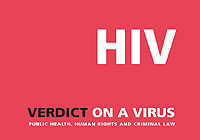
The International Planned Parenthood Federation (IPPF) launched on 13 November 2008 a new report Verdict on a Virus: Public Health, Human Rights and Criminal Law.
The International Planned Parenthood Federation (IPPF) launched on 13 November 2008 a new report Verdict on a Virus: Public Health, Human Rights and Criminal Law. The aim of the publication is to provide information about the criminalization of HIV transmission or exposure and its related health, human rights and legal implications.
The report brings together opinions from legal experts, human rights groups, medical and health professionals and HIV activists. Ten questions around the criminalization of HIV transmission are explored as chapters which also provide answers followed by explanatory text and illustrated with case studies.
Verdict on a virus is also a call to action to advocate for “good strategies and laws” that promote HIV prevention, while working with governments to discourage and prevent new laws criminalizing transmission of HIV from being passed.
“The law can be a powerful tool in addressing HIV if it is used to empower those vulnerable to HIV infection and to its impact, by guaranteeing access to services and protecting people from discrimination and the sexual violence that can drive HIV vulnerability,” said Susan Timberlake UNAIDS Senior Advisor, Human Rights and Law. “We need to make scarce legal resources work for the HIV response, not against it,” she added.
Verdict on a Virus: Public Health, Human Rights a
Feature story:
Advocating against overly-broad application of criminal law to HIV transmission (14 November 2008)
"What role can the law play?" (14 November 2008)
Concern over criminalization of HIV transmission (06 November 2007)
Publications:
Verdict on a Virus: Public Health, Human Rights and Criminal Law (pdf, 1.6 Mb)
UNAIDS/UNDP Policy brief - Criminalization of HIV Transmission (pdf, 241 Kb)
UNAIDS/UNDP International Consultation on the Criminalization of HIV Transmission: Summary of main issues and conclusions (31 October - 2 November 2007, Geneva, Switzerland) (pdf, 194 Kb)
Related

Feature Story
"What role can the law play?"
14 November 2008
14 November 2008 14 November 2008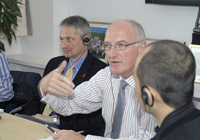
As Justice Cameron explained at a lecture at Peking University Law School, from his perspective, the law serves two important functions. Credit: UNAIDS/Zhou Dao
During his recent trip to Beijing as a guest of UNAIDS, Justice Edwin Cameron of South Africa’s Supreme Court of Appeals used every opportunity to raise the question, “What role can the law play in China in response to HIV?”
As Justice Cameron explained at a lecture at Peking University Law School, from his perspective, the law serves two important functions. First, it is an embodiment of public morality. Second, the law constrains the exercise of government power. In both these capacities, the law can have a profound impact on the lives of people living with HIV.
For example, in South Africa, the 1995 Labor Relations Act prohibits pre-employment testing for HIV. Justice Cameron applauds the law because it guides social conduct to be consistent with the moral stance underlying the law. “There are very few legitimate reasons to deny someone work because of HIV status,” said Justice Cameron.
The most important Chinese law embodying public morality about HIV is State Council Decree 457 of 2006, which prohibits discrimination against people living with HIV. Although this law sets a vital standard for Chinese society, public awareness of the law is low. As former Minister of Health Wang Longde explained at a joint press conference with Justice Cameron, even medical professionals often don’t know that they are not permitted to discriminate against HIV positive individuals. Professor Wang called for an educational campaign for medical professionals.
While Decree 457 is a good law that faces some implementation challenges, other laws are less positive. At a round table discussion held at UNAIDS China offices during Justice Cameron’s visit, he described the disturbing trend in African countries of laws criminalizing HIV transmission. Some of these laws require HIV positive individuals to disclose their status prior to engaging in sexual contact, but without clarifying when a person must disclose, or what constitutes “sexual contact.”
In Justice Cameron’s analysis, while these laws are intended to protect people — a laudable motivation — they can have devastating public health consequences. First, the laws are not effective as a means of stopping transmission; no law can accomplish that. As Justice Cameron explained, most acts of transmission occur between individuals who do not know they are HIV positive.
Second, the laws increase stigma and discourage people, especially women, from getting tested. Under some of these laws, women can incur legal liability for exposing their unborn child to HIV, even if transmission doesn’t occur. Many women and men find remaining ignorant about their HIV status preferable to risking criminal prosecution. Ultimately, by discouraging people from getting tested and seeking treatment for HIV, these laws lead to more people dying needlessly.
Justice Cameron pointed out that, ironically, these laws are unnecessary. In the event that anyone deliberately transmits HIV to another person, existing laws of assault or murder would apply.
China doesn’t have any laws that specifically criminalize transmission of HIV. But one article of the Chinese law does criminalize the intentional transmission of a sexually-transmitted disease (STD) by sex workers, and another law criminalizes intentionally causing harm to another person. Some critics have pointed out that the STD law has caused some sex workers to stop getting health check-ups. Justice Cameron commented that, although China’s criminal laws appear to have some negative ramifications for public health, the laws were general, and were not targeted to HIV specifically.
"What role can the law play?"
Feature stories:
Advocating against overly-broad application of criminal law to HIV transmission (14 November 2008)
Justice Edwin Cameron adds a new dimension to China - Africa relations (31 October 2008)
UN Secretary General’s Special Envoy Dr Nafis Sadik urges a broader approach to AIDS in China (24 October 2008)
Focus on China’s AIDS response (19 September 2008)
Publications:
UNAIDS/UNDP Policy brief - Criminalization of HIV Transmission (pdf, 241 Kb)
UNAIDS/UNDP International Consultation on the Criminalization of HIV Transmission: Summary of main issues and conclusions (31 October - 2 November 2007, Geneva, Switzerland) (pdf, 194 Kb)
International Guidelines on HIV/AIDS and Human Rights, Consolidated Version, 2006 (pdf, 932 Kb)
Criminal Law, Public Health and HIV Transmission: a policy options paper (pdf, 864 Kb)
Taking Action aqainst HIV, Handbook for Legislators on HIV/AIDS, Law and Human Rights, 2007 (pdf, 528 Kb)
Report on the ARASA/OSISA Civil Society Consultative Meeting on the Criminalization of the Willful Transmission of HIV
Legal Aspects of HIV/AIDS - A Guide for Legal and Policy Reform (pdf, 738.4 Kb)

Feature Story
Advocating against overly-broad application of criminal law to HIV transmission
14 November 2008
14 November 2008 14 November 2008In recent years, there has been an apparent increase in the number of people prosecuted for transmitting HIV, particularly in Europe and North America, with cases now numbering in the hundreds in the English-speaking world alone. There is also an increase in laws that criminalize HIV transmission and exposure to the virus, as reported in sub-Saharan Africa, Asia, and Latin America and the Caribbean.
As early as 1996, UNAIDS and the Office of the UN High Commissioner for Human Rights expressed concern over the inappropriate and overly broad application of criminal law to HIV transmission and provided guidance on it in the International Guidelines on HIV/AIDS and Human Rights. In 2002, UNAIDS issued a more detailed policy options paper on the subject. However, in light of growing concern over the spread of such laws, UNAIDS and UNDP felt it necessary to recently publish a policy brief entitled “Criminalization of HIV transmission”.
Intentional transmission of HIV
The policy brief makes specific recommendations for governments, civil society and international partners, urging that criminalization be limited to cases of intentional transmission of HIV. While UNAIDS and UNDP acknowledge that use of the criminal law may be justified in these limited circumstances – i.e. where a person knows his or her HIV positive status, acts with the intention to transmit HIV, and does in fact transmit it – they are concerned that going beyond such cases risks applying criminal sanctions to people who are not actually blameworthy, further stigmatizes people living with HIV, and creates disincentives for mutual responsibility for sexual health and to finding out one’s HIV.
The policy brief highlights concerns about possible negative impacts on effective prevention of HIV transmission, problematic disclosure and partner notification provisions, miscarriage of justice, as well as the possible negative impact on women and girls.
International Consultation on the Criminalization of HIV Transmission
In November 2007, the UNAIDS Secretariat and UNDP hosted an “International Consultation on the Criminalization of HIV Transmission” in order to consider recent developments in the area. The meeting brought together diverse points of view but also a shared concern over the apparent trend of criminalizing HIV transmission. An in-depth report from the three-day meeting has been released, giving an overview of the discussions, summary of the main issues and conclusions by the participants who included parliamentarians, members of the judiciary, criminal law experts, civil society representatives and people living with HIV, alongside representatives of WHO, ILO and the Office of the UN High Commissioner for Human Rights.
The report also includes the summary provided by Justice Edwin Cameron, judge of the Supreme Court of Appeal, South Africa.
“What meeting participants underlined was the fact that laws criminalizing HIV exposure and transmission are a dangerous and ineffective ‘sideshow’ in the response to AIDS,” said Susan Timberlake, Senior Human Rights and Law Adviser, UNAIDS Secretariat.
“Criminal law will never do the work of comprehensive and evidence-informed HIV prevention programmes. In fact, widespread criminalization may set back prevention efforts by deterring people from learning their HIV status, disclosing it to partners, and accessing treatment.”
No evidence that the use of criminal law reduces transmission of HIV
The main reasons advanced for applying criminal law are either punishment for someone who has caused harm or to deter risky behaviours that lead to HIV transmission.
However, there is no evidence that the use of criminal law is an effective measure for reducing transmission of HIV, and experts are concerned that criminalization is likely to have a negative impact on the overall response to HIV, including HIV prevention.
Potential negative impacts of use of criminal law
For fear of prosecution, people may be more reluctant to get tested and find out about their HIV status, as a perceived “legal defense”. Such laws and the reporting of individual cases in the media risk undermining the public health message that it is best to take responsibility for your own protection, rather than rely on a legal obligation of HIV positive people to disclose their status.
Criminalization may also create distrust in relationships with health service providers as courts might subpoena medical records in court cases. Finally, though many of these laws appear to have been passed as a “measure to protect women”, many experts fear that these laws will actually be disproportionately applied to women living with HIV. Women are often the first to find out their status and cannot tell their partners for fear of violence or abandonment. They also are less likely to have access to legal counsel than men.
For these and other reasons, many experts are concerned that the potential adverse consequences for both public health and human rights far outweigh any perceived benefits that could arise from an increased and overly broad application of criminal law to HIV transmission.
Advocating against overly-broad application of cr
Cosponsors:
Partners:
Office of the UN High Commissioner for Human Rights
Feature stories:
Concern over criminalization of HIV transmission (06 November 2007)
"What role can the law play?" (14 November 2008)
Verdict on a Virus: Public Health, Human Rights and Criminal Law (14 November 2008)
Publications:
UNAIDS/UNDP Policy brief - Criminalization of HIV Transmission (pdf, 241 Kb)
UNAIDS/UNDP International Consultation on the Criminalization of HIV Transmission: Summary of main issues and conclusions (31 October - 2 November 2007, Geneva, Switzerland) (pdf, 194 Kb)
International Guidelines on HIV/AIDS and Human Rights, Consolidated Version, 2006 (pdf, 932 Kb)
Criminal Law, Public Health and HIV Transmission: a policy options paper (pdf, 864 Kb)
Taking Action aqainst HIV, Handbook for Legislators on HIV/AIDS, Law and Human Rights, 2007 (pdf, 528 Kb)
Report on the ARASA/OSISA Civil Society Consultative Meeting on the Criminalization of the Willful Transmission of HIV
Legal Aspects of HIV/AIDS - A Guide for Legal and Policy Reform (pdf, 738.4 Kb)





